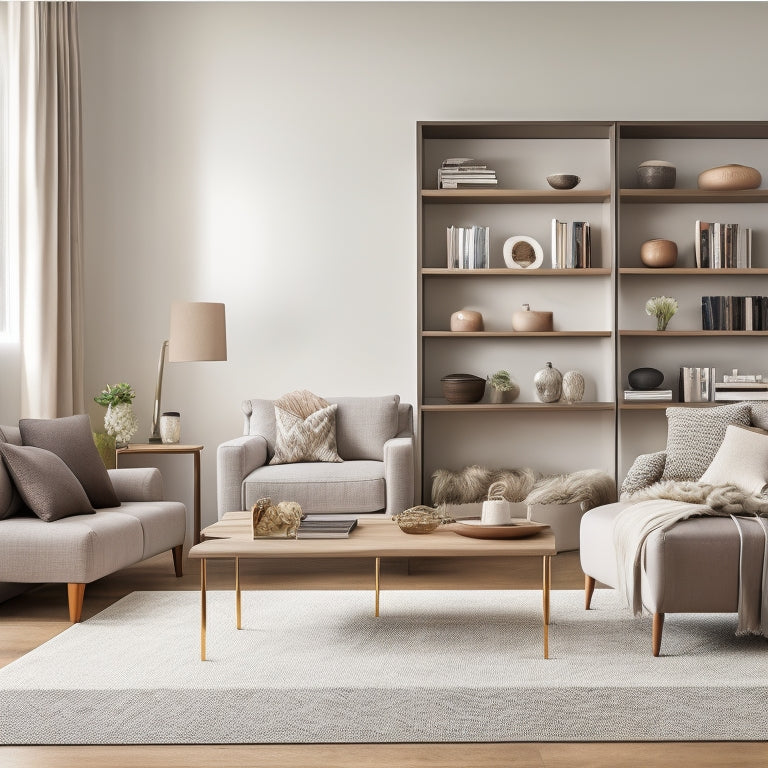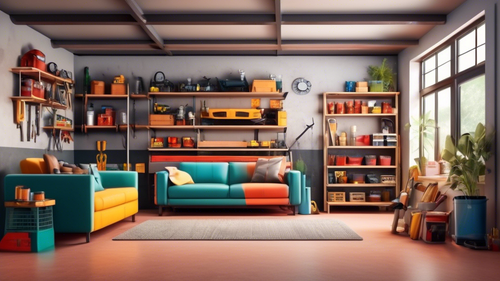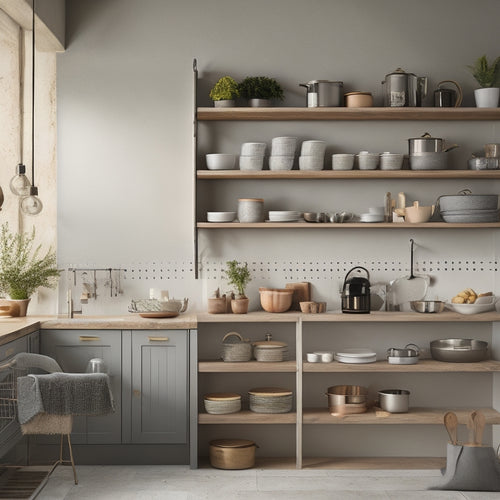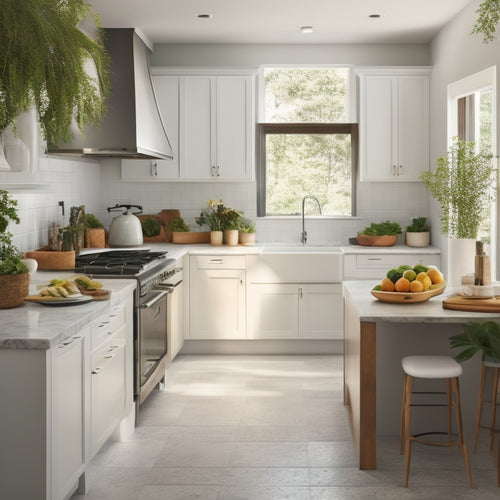
Master Your Space: Top Storage Tips Inside
Share
You're about to release the full potential of your living or working space by transforming clutter and chaos into a haven of productivity and calm, where every item has its designated place and purpose. Start by decluttering, focusing on meaningful possessions and embracing a minimalist lifestyle. Next, organize by assigning a home for each item, using vertical storage and hidden solutions, and labeling containers for easy access. Identify essential items, prioritize them, and create a functional layout. Finally, set aside time each week to review your systems and make adjustments. Now, get ready to discover more strategies to optimize your space.
Key Takeaways
• Optimize storage space by utilizing vertical storage and hidden storage solutions to maximize efficiency.
• Assign a home for each item to maintain order and ensure easily accessible possessions.
• Label storage containers for easy access and divide space into zones for specific storage areas.
• Implement a regular review process to maintain organization and make adjustments as needed.
• Allocate dedicated time each week to assess and refine storage systems for a clutter-free space.
Decluttering for Success
Before you can effectively store your belongings, you must first tackle the essential step of decluttering, which involves letting go of items that no longer serve a purpose or bring joy to your life. Adopting a decluttering mindset allows you to focus on what's truly significant, embracing a more minimalist lifestyle.
Sentimental items can be particularly challenging, but ask yourself if keeping them truly adds value to your life. By releasing unnecessary items, you'll create space for meaningful possessions and reduce stress. With a clear understanding of what you want to store, you can then explore suitable storage solutions that meet your needs.
Organizing Made Simple
With your decluttered space in hand, you can now focus on organizing what's left, and the key to success lies in creating systems that work for you, not against you.
By implementing easy organizing techniques, you'll be well on your way to achieving a clutter-free lifestyle. Start by assigning a home for each item, making sure it's easily accessible and efficiently stored.
Embrace minimalist living by only keeping what brings value or joy. Efficient storage solutions will help maintain your newfound order, ensuring everything has its place.
Smart Storage Strategies
You'll want to optimize your storage space by implementing smart strategies that make the most of your available room. Here are some space-saving solutions to get you started:
| Strategy | Description |
|---|---|
| Vertical Storage | Use wall-mounted shelves and hooks to maximize vertical space |
| Hidden Storage | Utilize creative containers like ottomans and storage cubes with lids |
| Labeling | Clearly label each storage container to guarantee easy access |
| Multi-Purpose | Choose furniture with built-in storage, like an storage bed frame |
| Zones | Divide your space into zones, assigning a specific storage area for each zone |
Home Organization Essentials
Establishing a solid foundation for home organization begins with identifying the essential items that will help you maintain a clutter-free space and achieve your organizational goals.
To get started, adopt a minimalist mindset and focus on efficient layouts that promote space saving solutions. This will enable you to prioritize what's truly important to you and allocate space accordingly.
By doing so, you'll be able to create a functional and peaceful living environment that reflects your personal style. Remember, clutter-free living isn't just about aesthetics; it's also about reducing stress and increasing productivity.
Staying on Track
To sustain your newly organized space, set aside dedicated time each week to review your systems and make adjustments as needed. This time management habit will help you stay on track and guarantee your space remains clutter-free.
Allocate a specific day and time, whether it's 30 minutes on Sunday evening or an hour on Wednesday morning, to assess your progress and make necessary changes. Having a regular review process will give you a motivation boost, as you'll see how far you've come and be inspired to continue your organizing journey.
Frequently Asked Questions
How Do I Maintain Motivation During Long Organizing Projects?
To maintain motivation during long organizing projects, you'll need to master mindful momentum. Set timely tasks, stay focused, and take self-care breaks to recharge, ensuring you're revitalized and ready to tackle the next task at hand.
Can I Still Keep Sentimental Items and Stay Organized?
You can keep sentimental items and stay organized by finding an organization balance, using sentimental storage solutions, and practicing sentimental decluttering techniques that honor your memories while maintaining a clutter-free space that sparks joy.
Are There Storage Solutions for Non-Traditional or Unusual Items?
You'll find creative solutions for storing unconventional items by thinking outside the box. Look for unique storage options that cater to your odd belongings, and get ready to showcase your treasured possessions in a functional and stylish way.
How Do I Organize Spaces With Limited Storage or Shelving?
You can optimize spaces with limited storage or shelving by maximizing vertical space with wall-mounted shelves and utilizing hidden storage options like under-bed containers, hollowed-out furniture, and multi-functional pieces that serve dual purposes.
Can I Involve My Family Members in the Organizing Process?
"Imagine having an entire army of organizers at your beck and call - that's what you'll get when you involve your family members in the process! By making it a team effort, you'll not only gain extra hands but also instill a sense of responsibility and ownership."
Related Posts
-

Taming the Garage: A Step-by-Step Guide to Organization
Are you tired of tripping over bikes, searching endlessly for tools, and feeling overwhelmed by the chaos in your...
-

Build Compact Kitchen Shelves in 5 Steps
You can create a compact kitchen shelf that maximizes storage and efficiency in just five easy-to-follow steps. First...
-

Island With Built-In Pot and Pan Organizer
You're likely no stranger to the frustration of cluttered pots and pans taking over your kitchen, and that's why you'...


